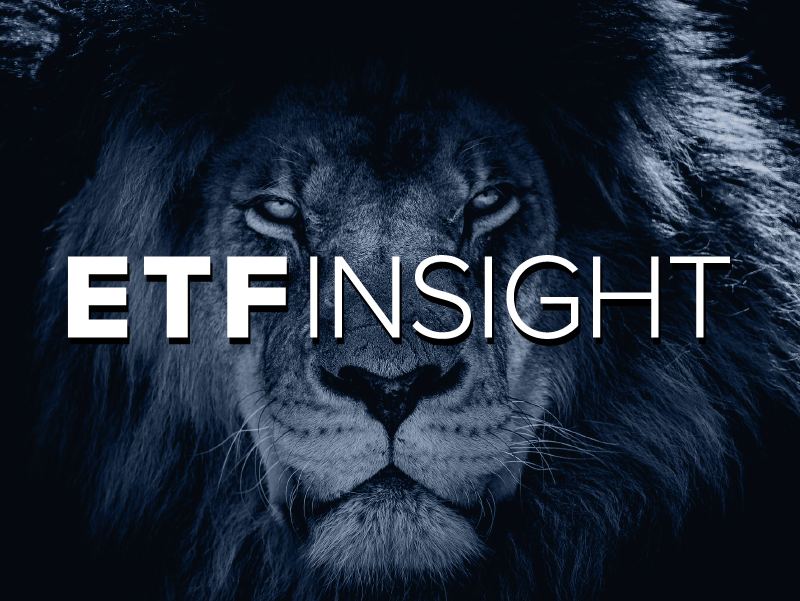A number of players from across the ecosystem are attempting to fight back against the dominance of the major index providers, however, will they have any success?
The significant growth in passive investing in recent years has been well documented as many institutional investors and asset managers change codes for cheaper strategies.
While ETFs are becoming more and more disruptive within the investing ecosphere, indexing is starting to face its own disruptors within this.
FTSE Russell, S&P Dow Jones Indices, MSCI and Bloomberg have often been referred to as the “Big Four” within the indexing arena controlling roughly 80% of the market.
But as ETFs have seen their fees significantly reduced to single-digit basis points, the same is yet to take place in the index provider space.
With four big players dominating the market, they determine what strategies will launch and ultimately dictate where investors allocate their assets.
Moorgate Benchmarks, among others, has said this is stifling innovation among ETF issuers and limits what is available for the end investor.
In response to this dominance, a handful of indexing platforms have launched in Europe over the last two years in an attempt to offer a cheaper and customisable offering to disrupt the industry.
Moorgate Benchmarks, IndexOne, ALLINDEX and Qontigo’s STOXX iSTUDIO have all launched some form of an indexing disruptor platform or service in recent times.
However, instead of providing an all-in-one solution, these players look to provide a certain step within indexing such as backtesting, indexing construction or regulatory consulting.
Frankfurt-based BITA is launching a platform, set to release in Q1, that is looking to offer a full service from providing data, constructing and licensing the index.
Victor Hugo Gomez, BITA’s co-founder and CEO, said the significant rush of assets into passive strategies is causing a growing demand for self-indexing services like these.
Gomez commented: “With the continuous growth of passive investing, and the increased adoption of customised exposures (ESG, factor, smart beta), asset managers and institutional investors have been increasingly licensing customised indices.
“However, when we are talking of many indices, these licensing fees can be significant. Moreover, many clients are looking to retain their IP, and be able to constantly iterate around new product ideas.”
BITA and similar services seek to enable users to design production-ready indices that are adaptable depending on the data being used. Additionally, they are looking to save the costs of indexing compared to the Big Four while also retaining intellectual property (IP), according to Gomez.
But as the disruptors try to underprice the indexing giants and maintain flexible and transparent products, how close are they to obtaining their market share?
Tobias Sproehnle, CEO at Moorgate Benchmarks, commented: “If you are not big enough or your idea is not perfect, you do not really have any other choice than creating the IP yourself.”
Gareth Parker, Moorgate Benchmark’s chief indexing officer, added: "The likes of Vanguard, State Street and BlackRock all want to know they have got a well-designed index that is suitably managed and properly governed so they can sell it under their own brand."
It is suggested that the bigger players cannot produce customised versions of their indices in volume which means there is a gap for those who are wanting more, faster.
"The way I see the index industry is in three brackets," Sproehnle said. "There are the big guns who account for 80-85% of the market. Then you have the middle layer who are the geographical players. Then finally you have the disruptors who all have different approaches."
It is simple enough to think of an innovative strategy, but one of the biggest issues the disruptors face is data and where to get it from. Exchanges are one of the biggest suppliers of data but most have their own index business as well as increasing the price of offering this data to competitors.
Additionally, this is not just an issue for equity, it gets more complicated once you go into fixed income or other asset classes, according to Sproehnle.
Another problem faced is regulatory preparation under Benchmark Regulation (BMR). Parker said BMR is equally as relevant within self-indexing. People who are looking to hold on to their idea and control it, by definition, become the administrator which is the regulated activity.
“As soon as people think they can just create their own IP and manage it, they will realise they have to hand it over to a registered benchmark administrator or would need to hire a significant number of employees," Parker said.
Alternatively, they could go through the benchmark authorisation process themselves but takes up to 9 months to complete.
There are not any expectations that the disruptors are going to overtake the larger index providers who have a large first-mover advantage but there are growing opportunities in an increasingly popular market.
Gomez said: “In many cases, especially for institutional investors, the needs are more around benchmarking their investments. In these situations, customisation and flexibility might not be the main issue but rather having a well-known, trusted, point of reference.
“While I do not expect this to change anytime soon, the market is ripe for innovation, so a scenario where large index providers co-exist and even partner with smaller innovative firms such as BITA can definitely benefit all stakeholders.”
ETF Insight is a new series brought to you by ETF Stream. Each week, we shine a light on the key issues from across the European ETF industry, analysing and interpreting the latest trends in the space. For last week’s insight, click here.





